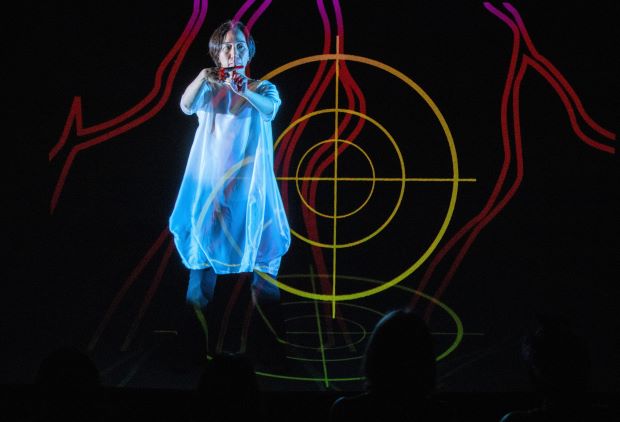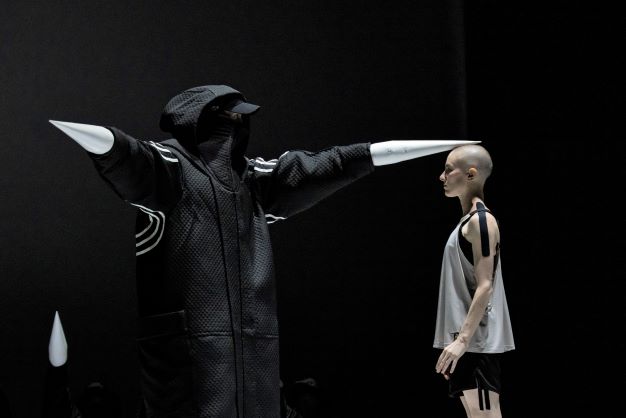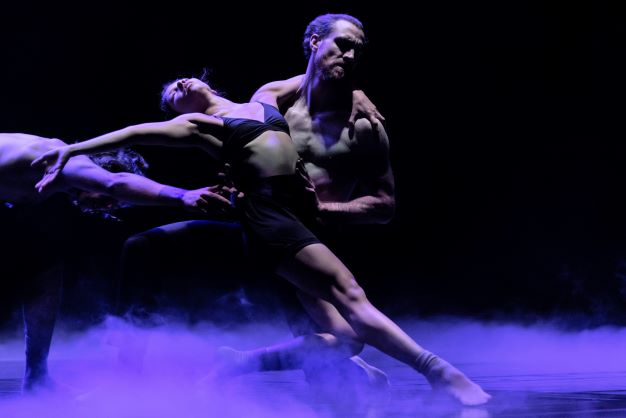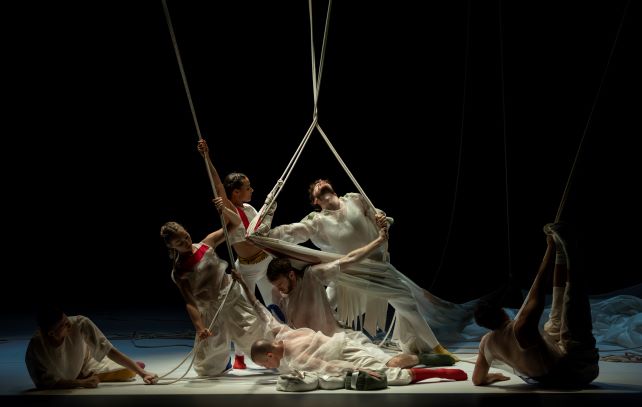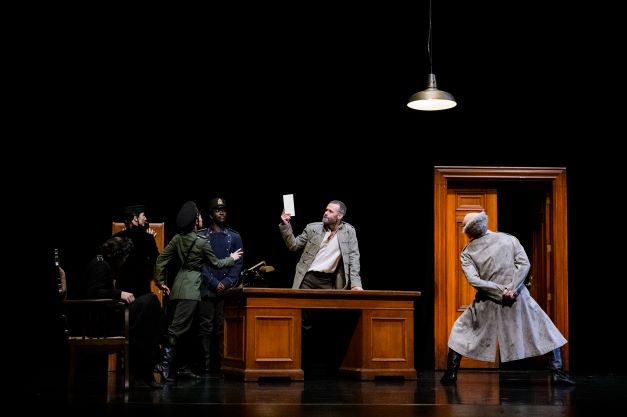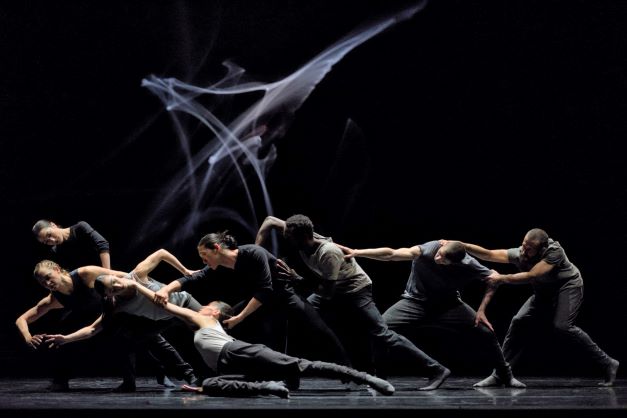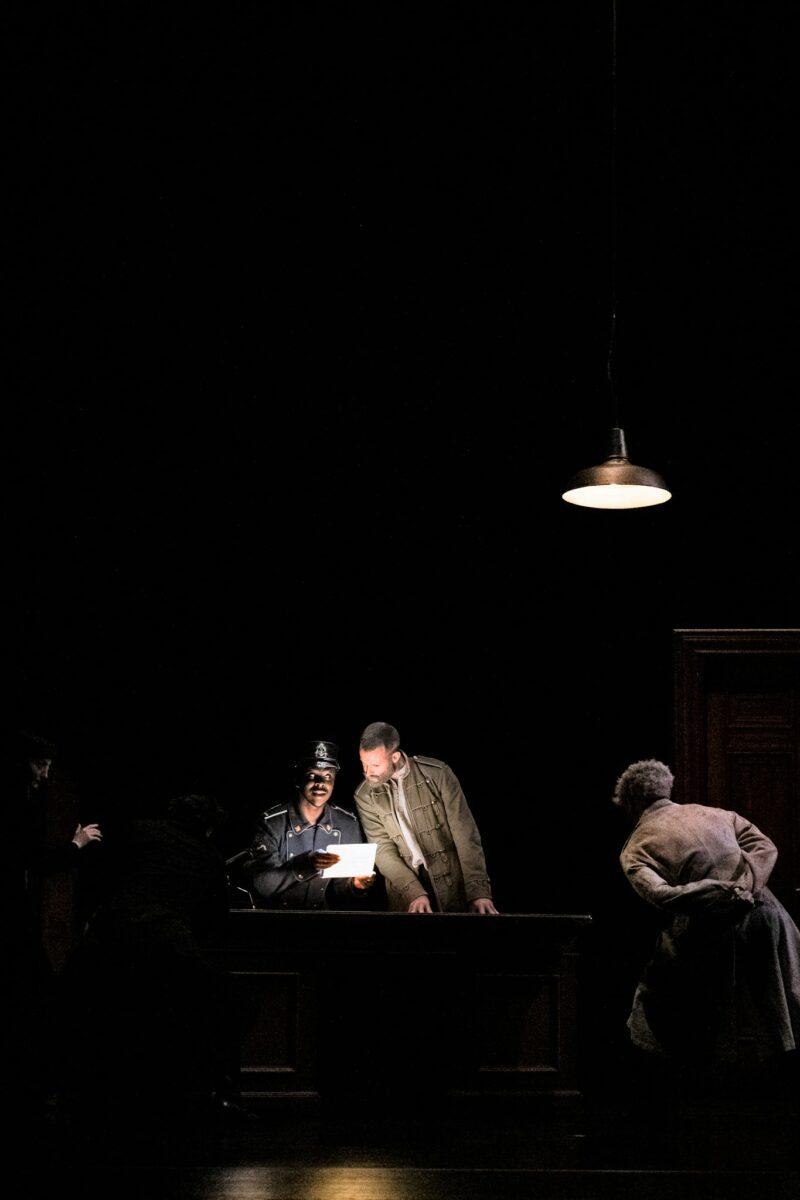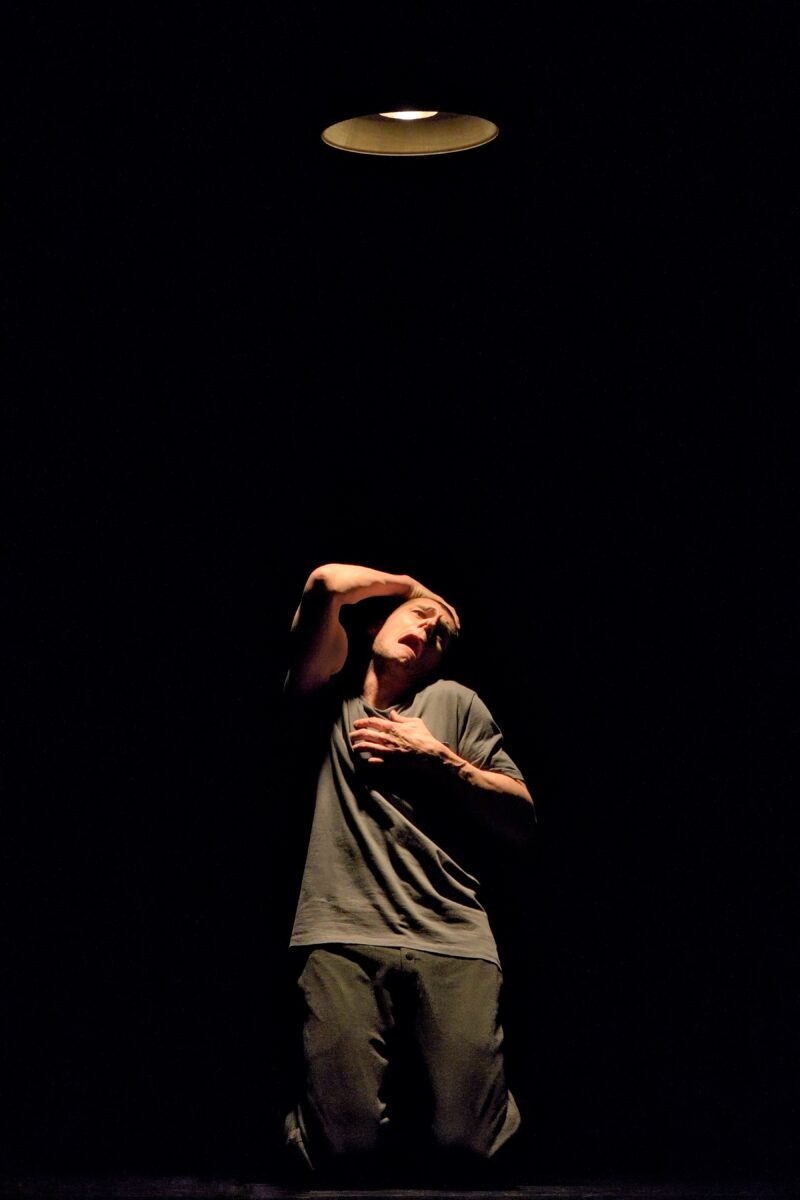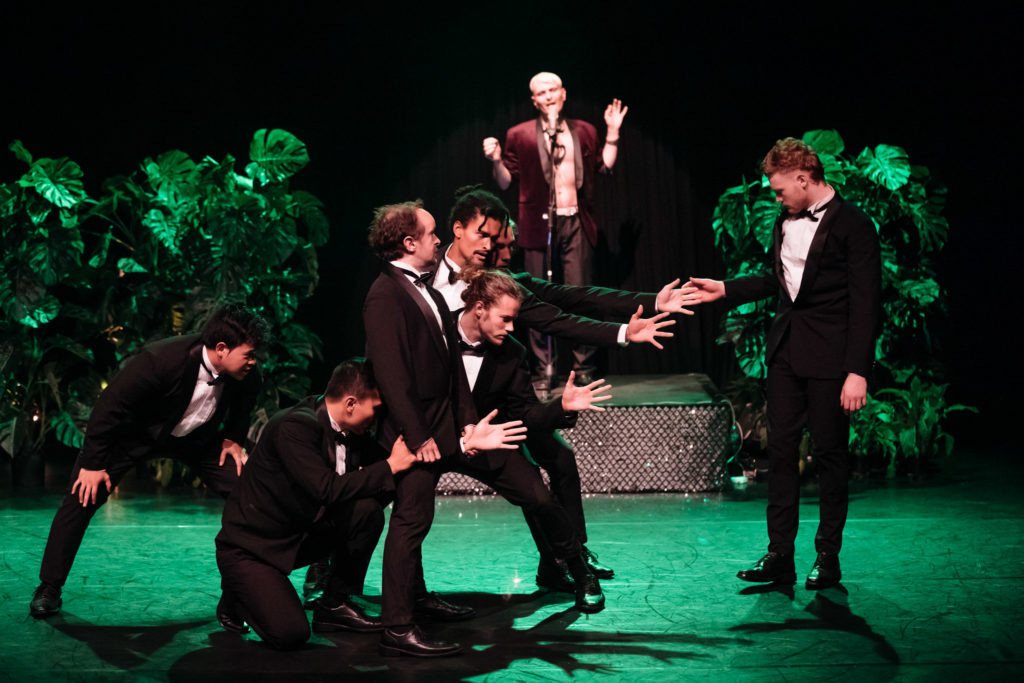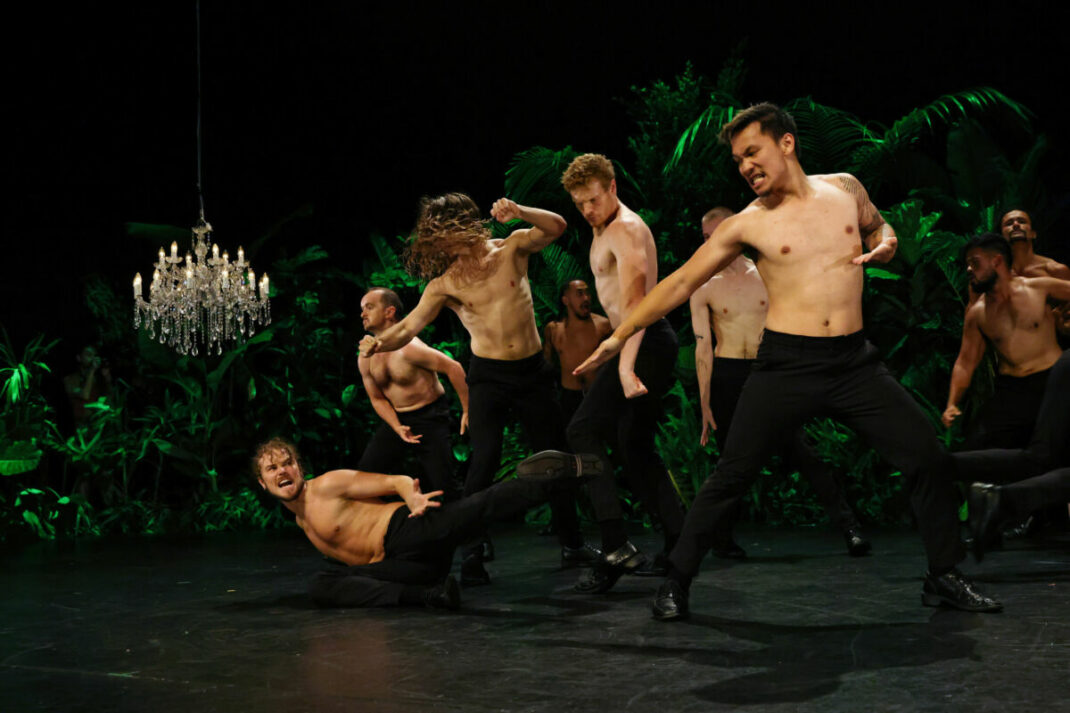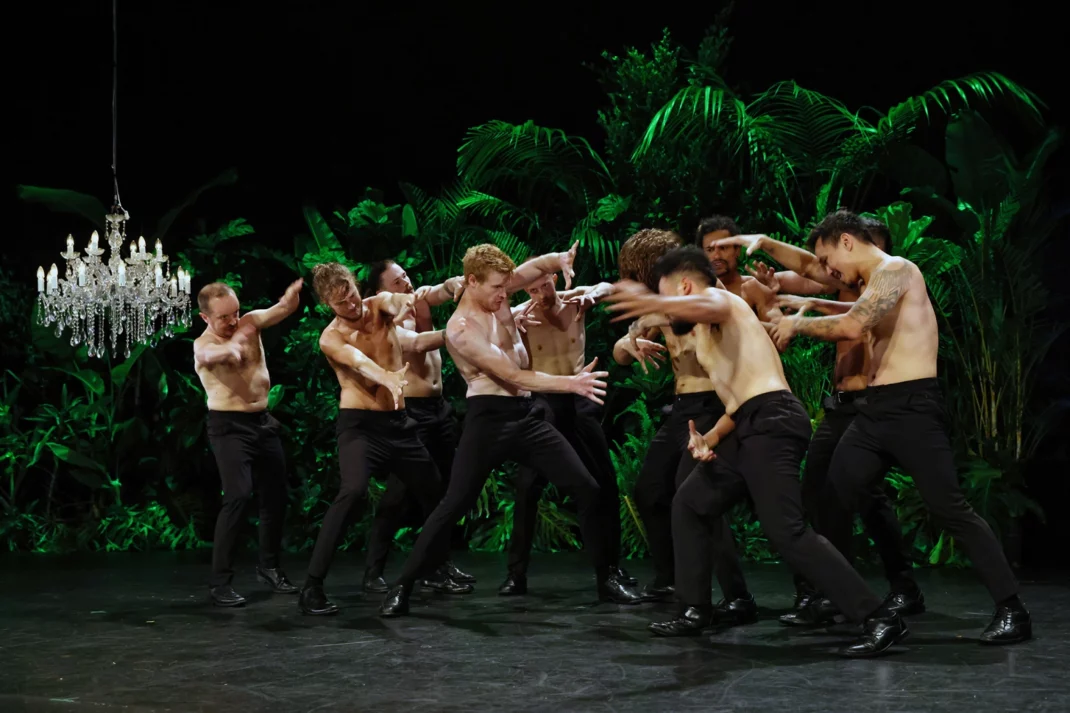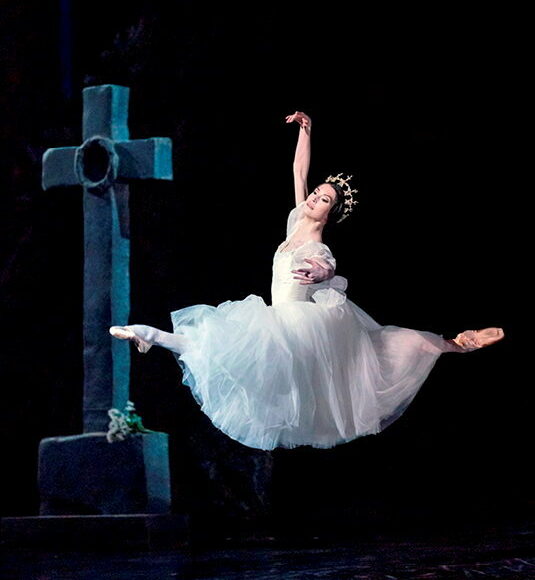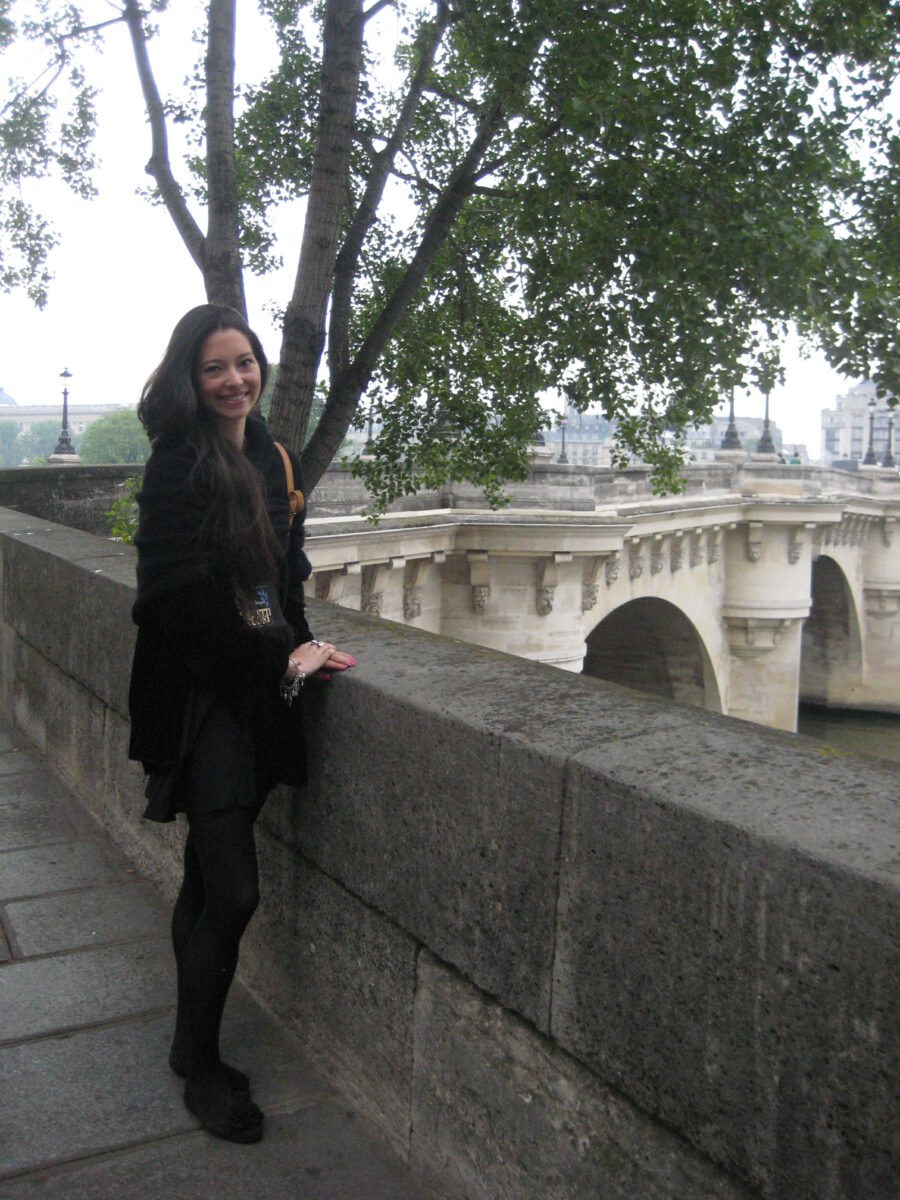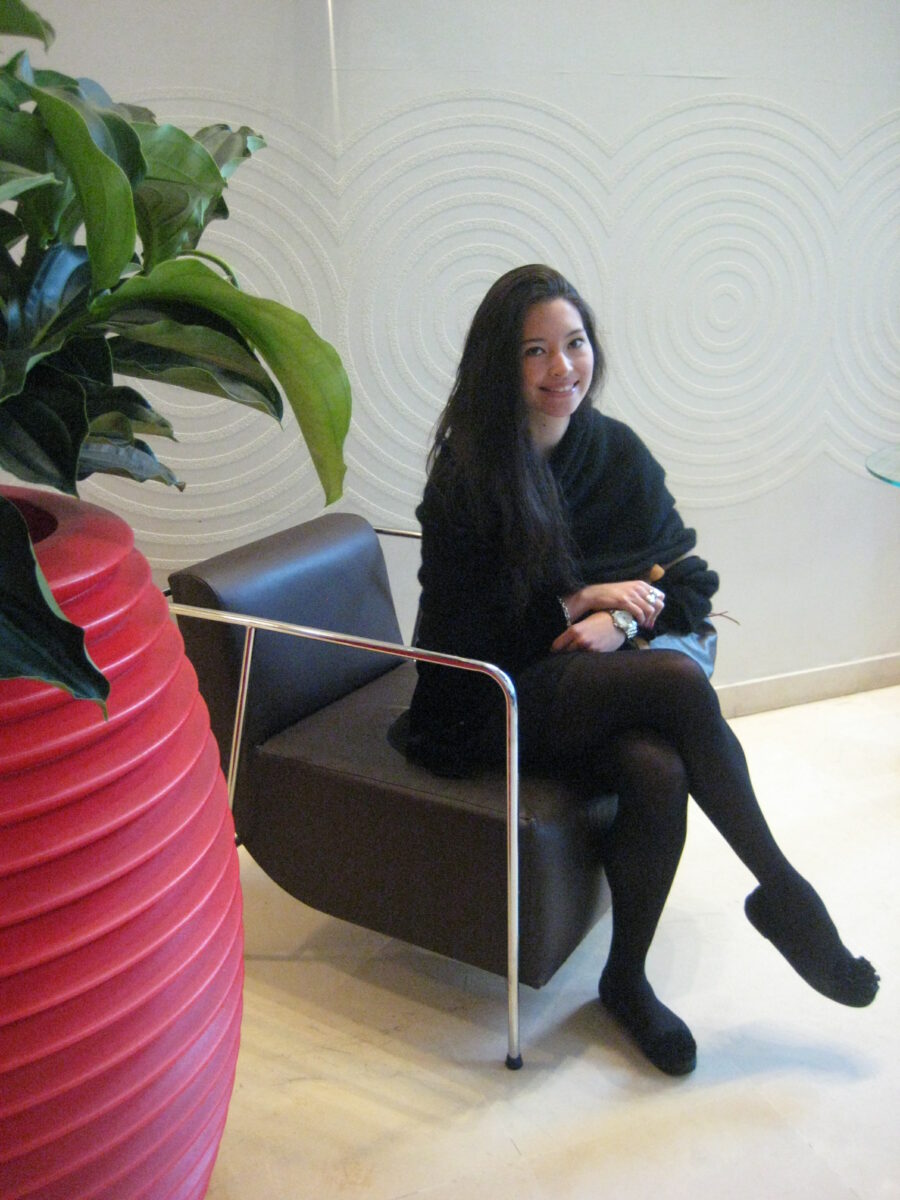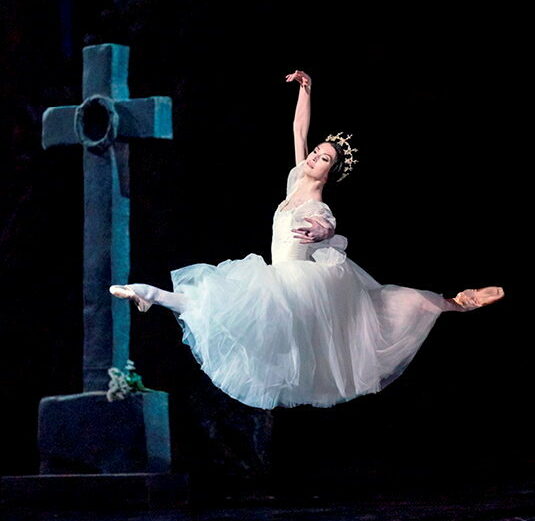11 March 2023. Spiegeltent, Aotea Square, Te Ahurei Toi o Tāmaki/Auckland Arts Festival
reviewed by Jennifer Shennan
This hour-long film screening had the creator and solo performer, Chisato Minamimura, present in the audience. It was followed by a discussion and q&a session with her, led by Shona McCullagh, artistic director of Auckland Arts Festival.
The film is poignant and moving in the extreme as it documents the experiences of deaf people who suffered yet somehow survived the bombing of Hiroshima in August 1945. You have to marvel at the message, be horrified at the scale of destruction, and wonder how you’ve never heard of ‘The Frank Report’ before. (That was a report submitted to the Truman government by a group of American scientists aghast at the planned bombing, and begging that the civilian population in Hiroshima be given advance warning to evacuate. Of course, the report was ignored and 140,000 people died. At Nagasaki, 70,000 died).
Minamimura, herself profoundly deaf, has an impressive record of dance training (Laban Trinity in London), and of creating and directing (she is a Work Place artist at The Place, London). The film uses signing, subtitles, Holo-Gauze (a projection material creating 3D holographic illusion), as well as sequences of Visual Vernacular, a more personalised mime-like dance-like form of expression. Post-war Japan included a program of compulsory sterilisation of deaf women in the attempt to eliminate ‘the deaf gene.’ Who knew?
The following discussion included an extremely competent signer and translator (from Platform Interpreting NZ) so the sizeable numbers of deaf community present in the audience could follow every syllable. In addition, from the program note: ‘At the heart of the show is cutting edge visual and vibration technology: Woojer straps worn by audience members offer a tactie vibrotactility of the haunting sound composition.’ Minamimura herself wears such a belt during the performance. How else would she know where she is up to in the music?
If the bombings of Hiroshima and Nagasaki were not precisely in retaliation for Pearl Harbour, they were certainly part of the same hellbent war, and some say terrorism weighed in ahead of military strategy. Was Dresden bombed into annihilation in retaliation for the destruction of Warsaw where ‘not a brick must stay upon a brick?’ Nobody wins a war altogether, it’s just endless revenge that only stops when one side surrenders, or someone presses a button. Numerous countries now hold nuclear weapons. Think about that.
Scored in Silence was altogether an astonishing work, revealing what the deaf community have long told us—that 75% of human communication is non-verbal. Think about that.
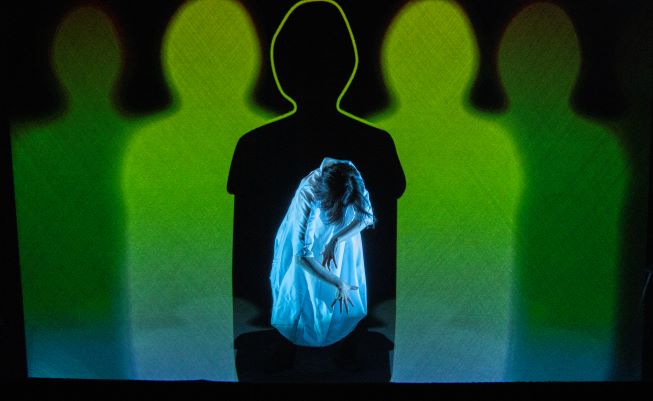
This was another tight and terrific show in Te Ahurei Toi O Tāmaki/Auckland Arts Festival. We were invited afterwards to place a hand and goodwill on the mauri stone, specially carved for the Festival by Ngāti Whātua, placed on a plinth in the Spiegeltent. Think about that.
Jennifer Shennan, 12 March 2023
Featured image: Scored in Silence with performer Chisato Minamimura. Auckland Arts Festival, 2023. Photo: © Mark Pickthall
